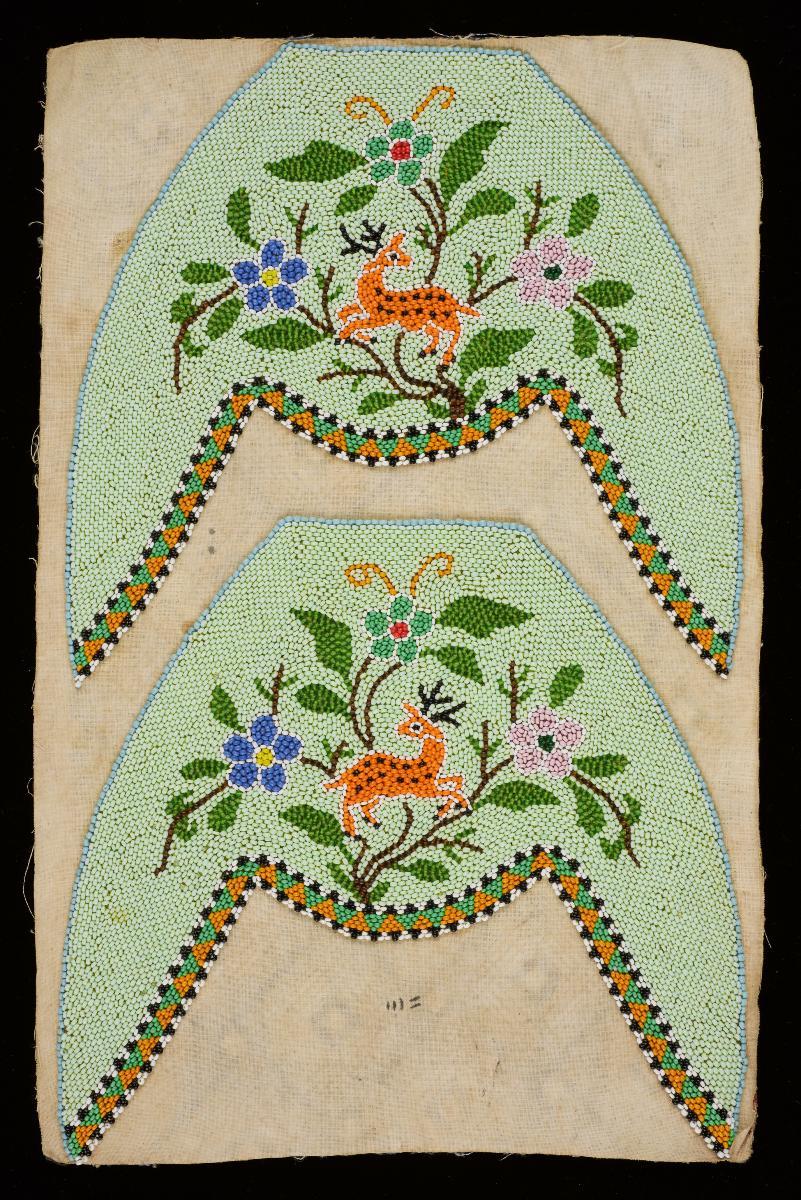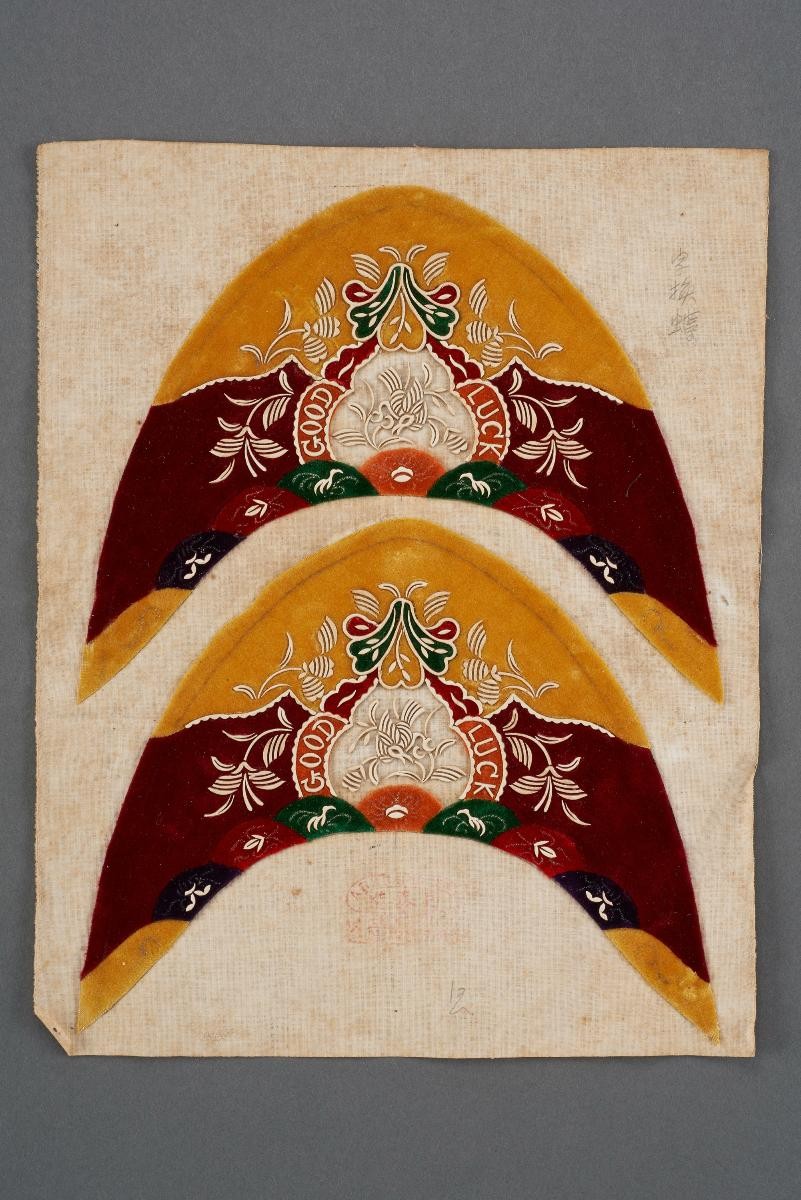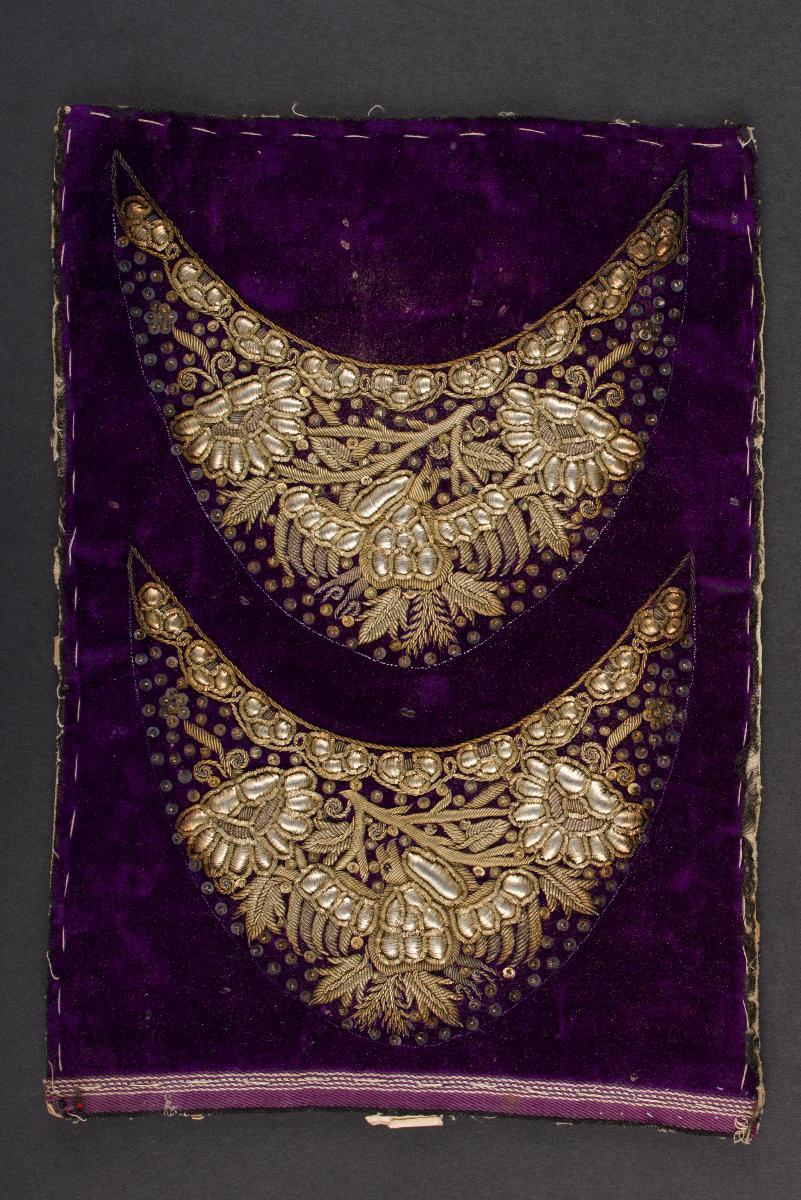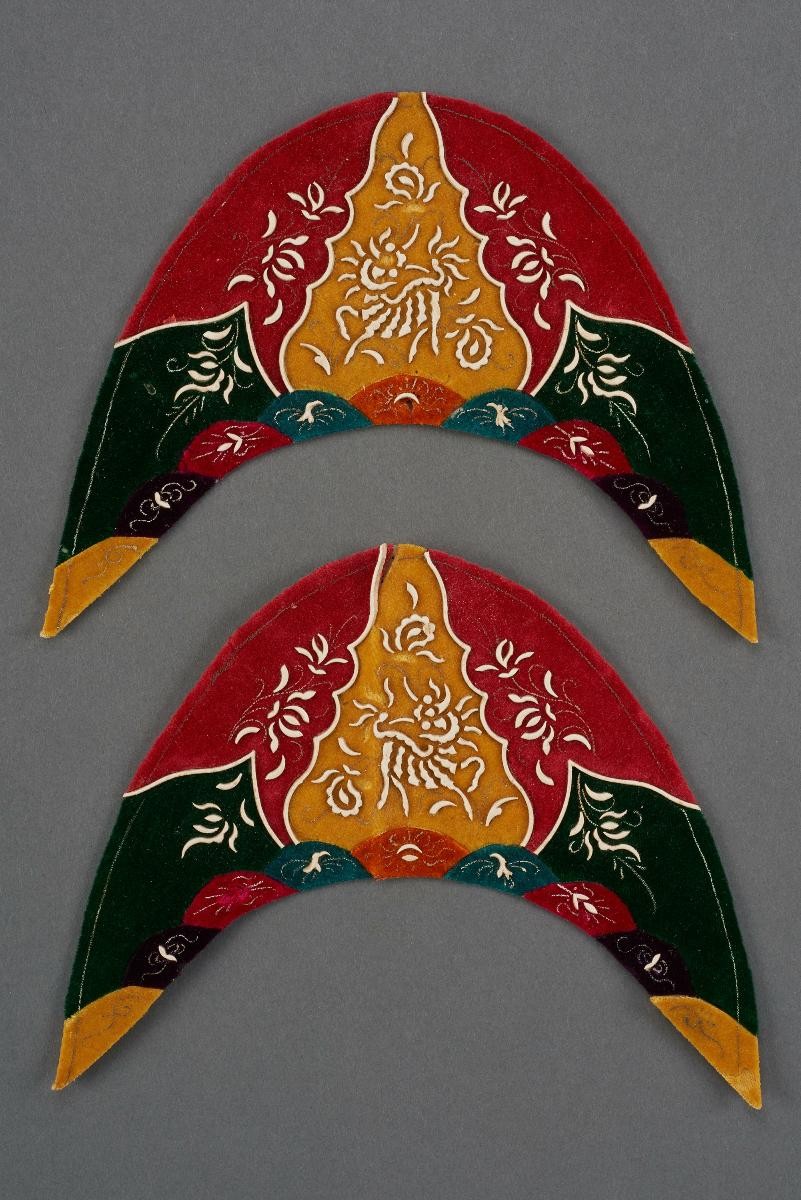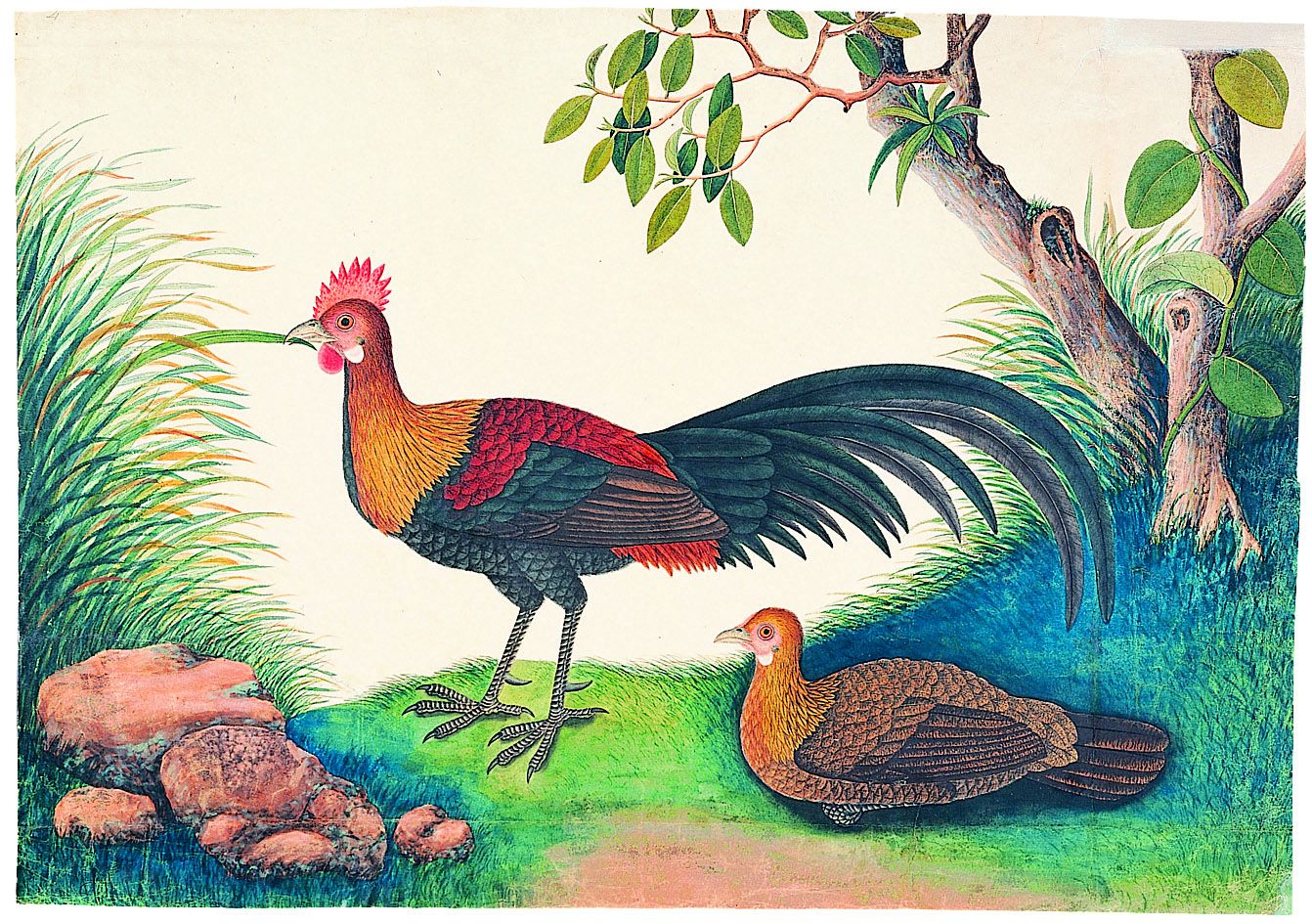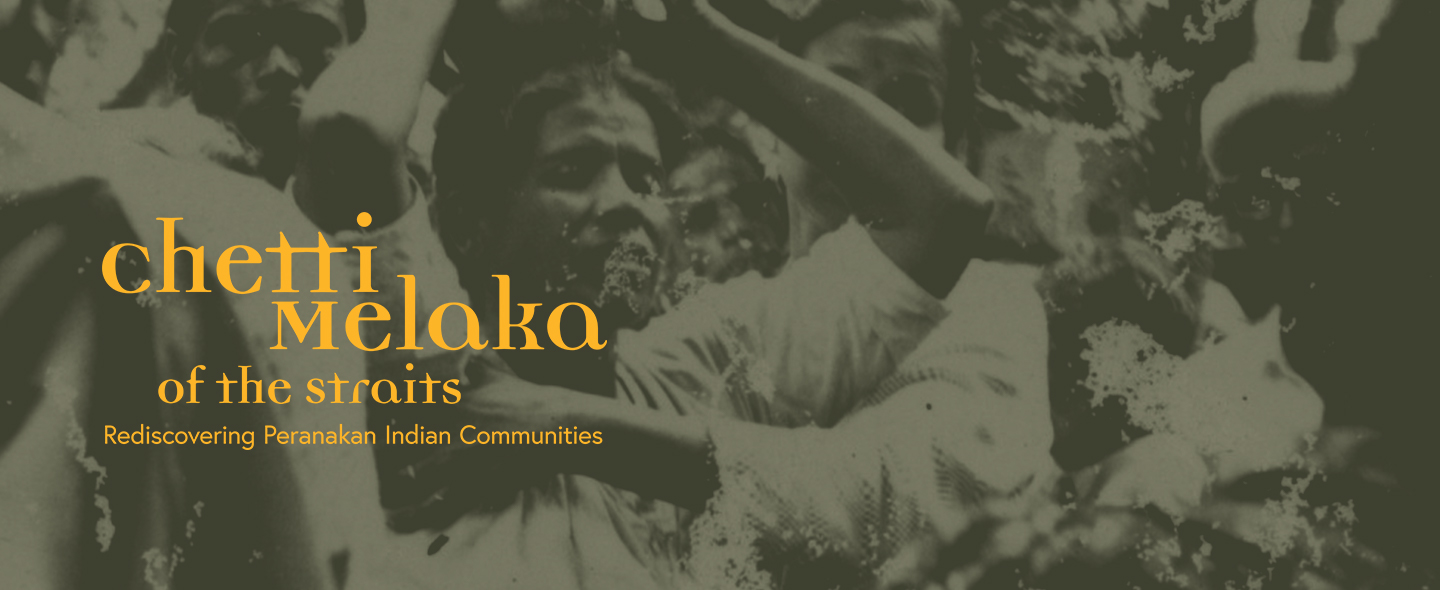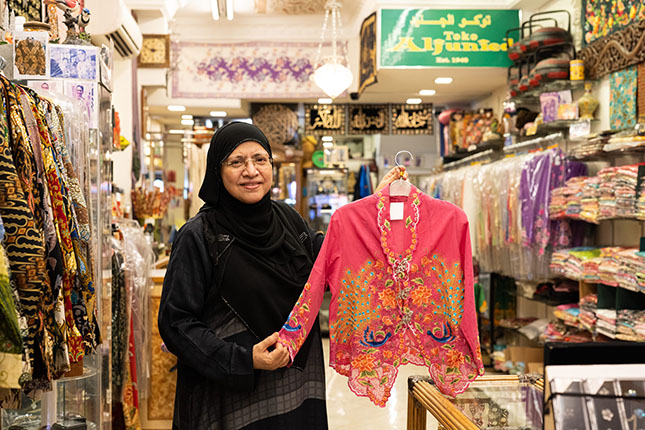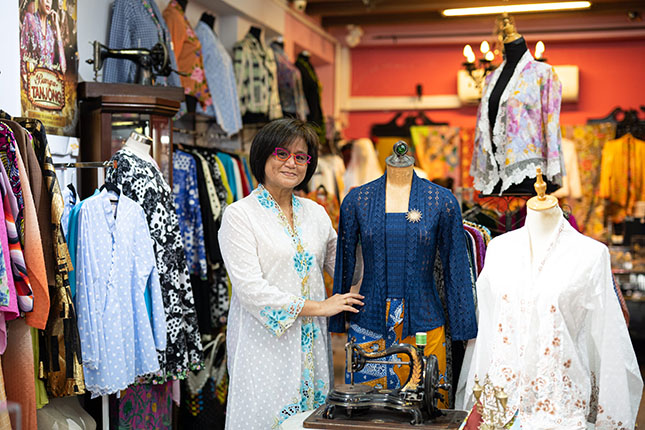“Kasut Manek” (beaded shoes or slippers) were traditionally worn with the “sarong kebaya” (blouse and skirt cloth) or the “baju panjang” (long tunic). The slipper face is covered with bead embroidery or threading. This is a technique where coloured seed beads are stitched onto a base fabric using needle and thread. The seed beads used were usually Rocaille beads imported from Europe. These were made of glass and faceted. Such bead embroidery was usually done on velvet or plain weave cotton and required the use of a frame or ‘pidangan’. For unfinished slipper faces like this, the base fabric is attached at its sides to canvas looped across four wooden rollers. This is then stretched taut across the ‘pidangan’ which is made up of two wooden sidebars and two braces, by passing thick string through the canvas at intervals and looping the string tightly around the sidebars and braces before passing it back through the canvas. The decorative motifs on this piece include flowers and deer, which symbolise longevity in the Chinese culture.




